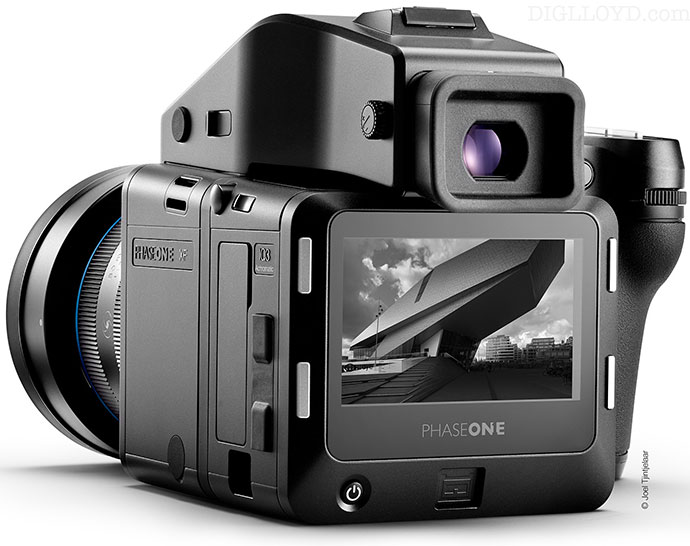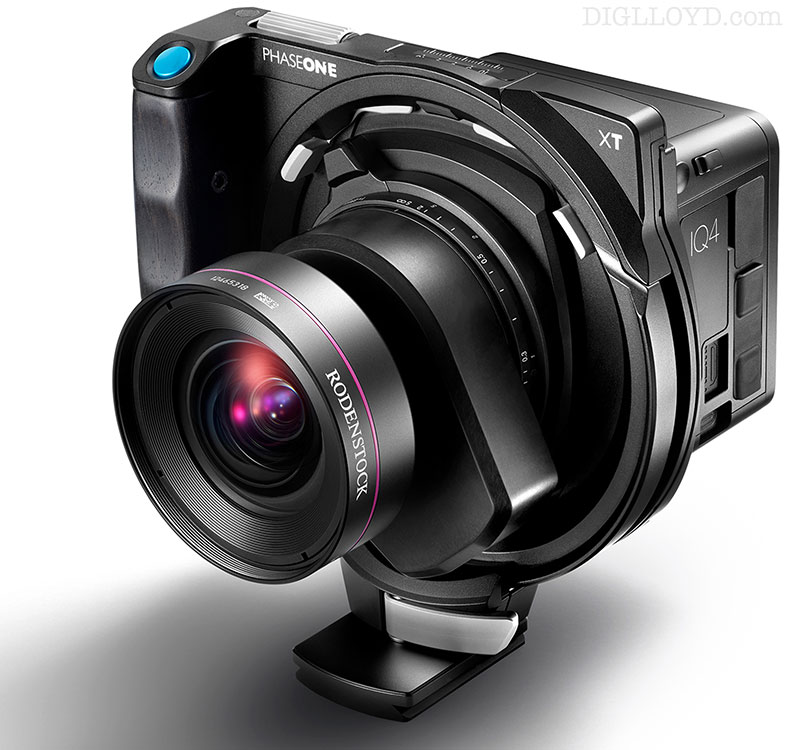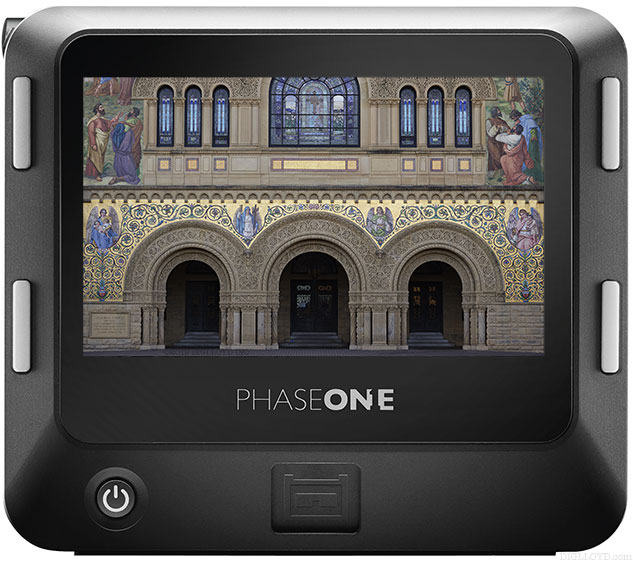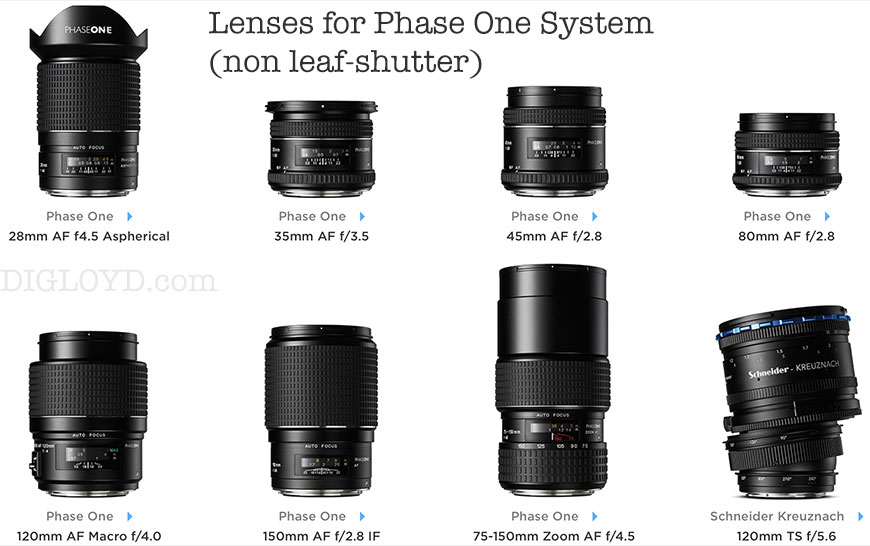On the Way for Testing: Phase One IQ4 150-Megapixel Medium Format System
I had hoped to test the new Phase One XT system (see PhaseOne XT system info), but it is too early with too few units yet made for a Phase One XT system to be available for evaluation. Maybe as a follow-up if there is interest and maybe the PhaseOne IQ4 Achromatic at some point too and the PhaseOne IQ4 TriChromatic (see the three IQ4 digital back options here).
And so I’ll be testing the Phase One XF system with the Phase One IQ4 digital back.
Image quality

My expectations are that the PhaseOne IQ4 will deliver the finest image quality I have yet seen. Coverage will go into Medium Format and I will be writing at least one article for Medium Format Magazine also.
In particular, I expect to see exceptional pixel quality, and freedom from the pattern noise of PDAF banding as seen all too often with the Fujifilm GFX100 — ruinous with some blue skies and a disaster for black and white renderings.
In other words, I expect the IQ4 to deliver true pro quality, proven and tested by the high high end pro world.
Technology
My impression of PhaseOne is that these folks really know what they’re doing, both hardware and software. For example, PhaseOne systems support focus stacking as well as frame averaging, features some 35mm cameras still lack. The latest digital backs are designed for years of upgradeability too.
Phase One CaptureOne Pro for raw conversion is highly respected by many picky photographers. Though I don’t use it for my reviews (for consistency and workflow issues), I intend to use C1 Pro for this testing, because it is likely that most pros using the PhaseOne system also use it.
I am hoping not to encounter operational bugs with the IQ4; online forums refer to a few issues, but with the late October firmware update, I am hoping for solid behavior with no reboots.
Cameras bodies
The PhaseOne XT system and Phase One XF systems share the same interchangeable digital back design. However, of the PhaseOne digital backs, only the IQ4 can be used on the XT system.
In terms of compatibility, the PhaseOne XF lenses are not yet usable on on the Phase One XT system, though a lens adapter might solve that in the future (nothing announced as yet). And of course XT lenses will never be usable on the XT system, given the flange focal distance.

The key difference is the lenses and their performance of course, but more practically, their weight and bulk, the Phase One XF lenses being very large and heavy. That, plus the the lighter and more compact camera body of the Phase One XT system may make it strongly preferred for those who carry their system in the field.
Diffraction
With tiny 3.76 micron pixels, same as Sony A7R IV and Fujifilm GFX100, capturing 150 megapixels of detail presumes both an incredibly good lens as well as not stopping down beyond f/5.6 or so, with f/8 plainly degrading the image from diffraction, at least with a top notch lens.
Still, when working in the field, as a practical matter, I regularly shot at f/8 on the Sony A7R IV and Fujifilm GFX100, because between field curvature and focus shift and the pressing need for DoF, sacrificing a little brilliance is a trade usually worth making. Indeed, even f/8 is far from enough depth of field for any near/far scene, even at 14mm.
Format equivalent depth of field
The huge 53.4 x 40mm sensor (2.47 larger in area than 35mm) needs more stopping down than 35mm for format-equivalent depth of field by factor of 1+ stops*, which is not good for fine detail rendition.
Given the foregroing, I expect I’ll be doing lot of focus stacking at f/6.3 or so, or probably f/8 just as a practical compromise and especially given the significant field curvature of most or all of the lenses, even though f/8 is guaranteed to noticeably degrade the image versus f/5.6. Using f/11 is recipe for poor brilliance and strongly degraded detail, as I showed on the Sony A7R IV.
* Calculation, long edge of frame: (53.4/35.8)^2 = 2.2X factor ~= 1+ stops.
Lenses

I’ll be testing the Phase One XF system with the following XF lenses:
- Schneider Kreuznach LS 35mm f/3.5
- Schneider Kreuznach LS 80mm f/2.8
- Schneider Kreuznach LS 150mm f/2.8 IF
- Schneider Kreuznach LS 40-80mm LS f/4.0-5.6
- Schneider Kreuznach LS 240mm f/4.5
Everyone indicates that if going with PhaseOne, stick with the Schneider Kreuznach LS lenses, many of which are more modern and higher performing lenses than the older Mamiya Phase One lenses. Even so, the MTF charts I’ve seen make me conclude that they will be challenged by the 3.75 micron pixels of the Phase One IQ4 digital back. Which of course makes sense, since just about all lenses on the Sony A7R IV are challenged by its 3.76 micron pixels (same size as IQ4).

Below, most of these lenses are older Mamiya medium format designs. My expectation is that they will not be adequate for the tiny3.76 micron pixels of the Phase One IQ4 digital back.

Jon M writes:
I can hardly wait to see what you find. I have just invested in a Certified Pre-Owned XF system albeit an IQ3 100MP back with 80 and 35 mm lenses. I am waiting to take delivery so I am somewhat nervous to hear your verdict.
A word of warning – I have heard from several photographers including a couple of dealers that you MUST use blue line lenses with the IQ4. While they list some of the older lenses as being acceptable with that back I have been told they really do not do it justice.
Do you know whether you are getting the regular IQ4 color back or the IQ4 Trichromatic back? I’m not sure whether you can do an apple to apple comparison but it would be really interesting to see how you find Schneiders compare to Zeiss Otus.
DIGLLOYD: well, certainly the Zeiss Otus lenses will far outperform the Schneider lenses (the MTF charts show that in quite an obvious way), but the Otus lenses only have to cover a 36 X 24mm sensor. It’s all about total image quality, so we shall see how it all works out.
Lenses: I asked for all blue line Schneider Kreuznach LS lenses, but I won’t know till Monday Nov 25 what was actually sent. Some of the designs such as the Schneider Kreuznach LS 35mm f/3.5 are clearly substantially better than the older Mamiya design lenses. Yes, it will be disappointing if I don’t have at least two of the Schneider Kreuznach LS lenses, ideally the 35/3.5 and 150/2.8 at the least.
David H writes:
I concur with what Jon M and others have said about Schneider Blue Ring lenses. They are superior, for the most part, to the older Phase/Mamiya designs. I own an XF system with the IQ3 100 megapixel back and Schneider BR 45, 55, 80, 110, and 240mm lenses. The 45 and 240, in particular, are gems—size and weight notwithstanding. I use the 45 for much of my landscape work, and the reach of the 240 is wonderful to have when I need it.
I’ve worked with Phase One gear since 2008. In my opinion, they are innovative and serve the needs of their customer base (commercial photographers, fine art landscape photographers) extremely well. I am eager to read your upcoming reviews of the XF, IQ4, and whatever lenses they send you. And I would be especially interested in what you would have to say about the XT, should you manage to snag one for testing.
DIGLLOYD: my understanding is that the optical designs in the Schneider blue-ring lenses are all new for the 35/3.5, 45/2.8, and 240/4.5 (others?) but that the other lenses are less current deisgn and may be the same as the non-blue-ring designs.























